You don’t need any weird contraptions or fancy infomercial machines to transform your body at home. There are only four must-have pieces of equipment you need in a home gym, and if you invest in them, and use them right, there is no limit to the amount of muscle and strength you can build without even leaving your own house…
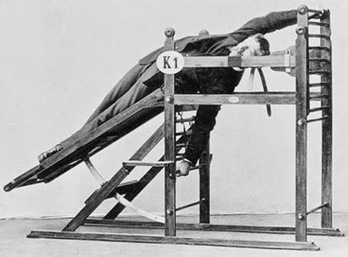
They didn’t quite know what they were doing with exercise machines in the old days. Thankfully today, choosing the best equipment is easy
What are the staples in an effective home gym and how can we maximize our strength and muscle-building results with limited equipment?
If your primary fitness goals are muscle and strength, the first thing you start with in any home gym is free weights.
If you had to start your home gym with only one item, start with a set of dumbbells.
There is so much you can do with dumbbells – hundreds of exercises!
You have several choices for dumbbells. The most popular are solid dumbbells (or dumbbells with weight plates that are bolted on). These have the nicest feel in the hands.
The one and only downside of solid/fixed dumbbells is you need a whole rack of them – one pair for every weight increment. That takes up space and could get expensive (and the stronger you get, the more you need).
Another option is the old school plate-loading dumbbell handle. You simply put regular (small) barbell plates onto the handles and secure them with collars – the same way you load barbells. This can be very economical and save space. It does however, waste time and become a pain in the butt to change the weights between exercises, compared to simply picking up a pair of solid dumbbells.
A third option that’s even more convenient and time-saving is selectorized dumbbells. Three of the better known brands are PowerBlocks, SelectTech by Bowflex and Ironmaster Quick-Lock dumbbells. These are ingenious inventions. They save space, time and money.
Literally by pulling a pin or turning a dial, you can change the resistance, which does away with a whole rack of conventional dumbbells (the weights fit inside each other, so the whole set only takes up the space of one large dumbbell.
If there’s any downside, it’s that some adjustable / selectorized dumbbells are not conventionally shaped and have a slightly awkward feel or bulkiness to them, but most people say they get used to it. Some models have a more natural feel than others. If you have a chance to test these out before purchasing them, you could easily make your own decision. It could be a great choice for a limited-space home gym.
Next priority: a barbell and weight plates
While there are many types of specialty barbells, there are only two major categories. One is the standard barbell, which has a one-inch (25.4mm) diameter bar. The plates that load on each end have (small) holes to match. The standard bar is solid and the ends (sleeves) do not rotate. These barbells vary in weight, but are usually around 20 pounds (without any plates on).
Standard barbells are recommended for lighter loads, usually not going over 200 pounds. Most beginners training at home will do fine starting with a standard barbell set. Even if you invest in a top-notch Olympic barbell set in the future, it’s never a bad idea to have both, especially if you do a lot of superset training, which may require two stations with two bars loaded to different weights. This saves you time changing plates between sets.
An Olympic bar is 7 feet long and weighs 45 pounds (5 and 6-footers are made, but 7 feet is the standard). The bar is 28 millimeters (1.1 inches) in diameter where you hold it and the sleeves are 50 millimeters in diameter (about two inches) to fit the Olympic plates. These bars are stronger and rated to hold more weight (without bending).
Unlike standard bars, the sleeves on Olympic bars rotate, which relieves stress on the wrists and other joints. These are the barbell sets that professional athletes use, they are found in all major gyms and they are ideal for the big lifts including squats, deadlifts, and bench presses.
Here’s a tip for the budget conscious: You don’t have to buy weights new. There are previously-owned barbell sets for sale almost everywhere, and if you start your search locally, you may be able to pick them up and not even worry about shipping costs. Every once in a while you may stumble onto an equipment auction when a gym goes out of business and it’s possible to score some ridiculous deals.
Why invest in free weights (dumbbells and barbells) first?
1. Nothing is more versatile and multi-purpose than free weights.
You might think a set of free weights is limited equipment, but it’s not; there’s nothing more versatile. There are books on barbell and dumbbell training that list dozens of fundamental exercises, and if you count minor variations on basic movements including different grips, angles or body positions, there are actually hundreds of exercises you can do with free weights.
Former Mr Universe and bodybuilding legend Bill Pearl wrote an epic encyclopedia of weight training exercises and in it, I counted 87 dumbbell and barbell exercises for the shoulders alone! (I know he missed a lot of variations as well – there are almost certainly over 100 exercises you could do for every major body part just with free weights.
2. Nothing is more effective than free weights.
Nothing builds strength and muscle better than free weights. It’s not that resistance from cable machines with weight stacks or other types of weights can’t give you any results; you can get a strength and muscle-building workout using any kind of resistance, even your body weight alone (pullups, push ups, dips, etc).
Free weights are simply the most dependable and proven way to build maximum muscle and strength with progressive overload– not to mention the most economical and durable. Treated well, your free weights can last for decades, if not a lifetime, and they will never go out of style like so many exercise fads do.
Almost all the other resistance training methods should be considered secondary or simply for variety or convenience. Free weights are the king of resistance training for men, women, youth, and adults of every age.
3. Consumers are conditioned to buy infomercial fitness machines first (but that’s backwards).
It’s shocking how many people think that the first and best home gym purchase for strength training should be some kind of weight lifting machine, whether it has a weight stack or cables or bands or leverages your own body weight. That belief is not based on science or well-known facts in the strength training community, it’s based on marketing.
Exercise equipment is one of the most frequently sold products on infomercials, because the advertising taps into emotions – how we see ourselves (our body image), how we think others look at us, and our health problems. The emotionally-driven ads are working, (especially the ones with celebrity endorsements), but the truth is, no machine – by itself – is a better investment than free weights.
With all due respect to the companies that make excellent multi-purpose machines for the home (and the people who already use them), I recommend that if you have not made a home gym equipment purchase yet and your primary goals are strength and muscle, then forget about all the fancy and glamorized home gym machines until you have free weights first and you’ve learned how to use them.
Once you have free weights and free weight accessories like racks and benches, then budget and space permitting, you might add machines (a simple cable-pulley-weight stack apparatus would be great). But there are no additional home gym machines that are must-have; everything else you add to your home gym is optional – like icing on the cake.
The power rack (aka power cage) and the bench
Once you have a barbell and dumbbell set, you can get started and you can train every muscle in your body. But without a third and fourth piece of equipment – a rack and a bench – you can’t efficiently and safely do the barbell squat and bench press, which are two of the three power lifts. So there you have the other two staples for the ultimate home gym.
A power rack is a big piece of equipment that has a lot of height and a fairly big footprint so you have to consider that when you look at your space at home. It’s ideally situated in a garage, basement or a dedicated workout room. It’s not going to fit into the corner of a spare bedroom. An alternative is a pair of squat stands and the bench, but if you have the space, get a sturdy power rack.
With a power rack, you can squat inside the rack and also pull the bench inside for bench press, and you can do it safely because the rack has pins so you wont get stuck if you miss a lift. You can also set the rack at shoulder height for overhead presses and then you don’t have to clean the weight from the floor.
When you get your power rack, I’d recommend looking for one that has pullup bars at the top, and preferably with grips for close and wide. Pullups are a staple exercise, so that kills another bird with one stone. You might even be able to find a rack with dipping bars attached to the side. Some even have a landmine apparatus attachment and that will give you dozens more exercises you can do.
In large commercial gyms you see Olympic flat and incline benches that fit the 7-foot Olympic bar. If you have a power rack, you don’t need those types of separate benches at home, all you need is one fully adjustable utility bench. You can slide it inside the rack and set it to flat or incline for chest, and vertical for seated shoulder presses.
Is any other equipment is worth getting for a great home gym?
Believe it or not, those are the only four staples you need for for building almost unlimited strength and muscle.
There’s endless extra equipment you could add based on your space and budget, but you could think of everything else as optional, or “luxury add-ons.” Or, we’re talking about little accessories like a lifting belt, dipping and chinning belt, calf block, stability ball, ab wheel, floor mat, and so on.
Also, what extra equipment you might get beyond free weights, a rack and a bench is mostly a matter of personal preference and what suits your goals. For example, some people enjoy kettlebell training and that would make a nice home gym investment as well. (However, I would still recommend dumbbells before kettlebells).
If it was for my own home gym, and my space was limited, but I wanted to add more equipment, the next thing I’d get would be a cable pulley machine, which is versatile, so I could do pulldowns, low rows, face pulls, tricep pushdowns, cable curls, lateral raises, cable upright rows and so on, and I’d get several different bars and handles. For me, that fifth item would truly make it the ultimate home gym, since I enjoy doing so many cable exercises.
Cable and pulley attachments do come built into power racks sometimes, so that’s an option, but the quality can vary a lot. I’d scrutinize (and test-drive if possible) that type of multi-purpose equipment (including the size of the weight stack) closely before committing to buy.
Unless I had a big budget and a big house with a big space for building a dream gym, I wouldn’t want or need anything else.
If you really have a strong preference for machines, or enjoy the mix of free weights and machines, it may be the best investment of both time and money to join a gym. This way, you have a whole building full of individual commercial-quality machines for every muscle group, instead of having one contraption at home you bought from a TV commercial, that might be cheaper and flimsier than health club grade equipment.
It’s your call. Personally, I’ve preferred training in gyms my whole life, though I did have a garage gym when I was younger. As a bodybuilder, I like having access to a wide variety of exercises including a mix of machines on top of the free weight basics, which is one of the reasons I train in gyms that are exceptionally well equipped.
Some of the equipment I use regularly in the gym includes the lying leg curl, seated leg curl, 45 degree leg press, horizontal leg press, hack squat, front squat machine, leg extension, standing calf, seated calf, donkey calf, low back extension, glute-ham developer, Smith Machine, T-bar, cable crossover, pec flye, rear delt, pullover, preacher bench and a handful of upper body (weight stack) machines.
I wouldn’t consider any of these as staples in a home gym though – having all this stuff is a perk of training in a fully equipped club.
With that said, I have to admit, the most ultimate set-up for me would be to have both – the gym membership and also a simple setup at home. This way, I could train at home for convenience and save gym commuting time whenever I was busy, even if I trained at the gym most of the time. Best of both worlds, right?
Summing it up, I train in a gym, but if I were going to set up a home gym tomorrow, I would start with the same simple setup I’ve recommended to you:
The four home gym staples (start here)
1. Dumbbells
2. Barbell set with plenty of weight plates
3. Power rack with pull up bars
4. Fully adjustable utility bench
* Optional 5th item: cable pulley machine
Train hard and expect success,
Tom Venuto
PS. If you’re looking for a training program designed for busy people to get quick, but powerfully effective muscle-building workouts, check out The New Body (T.N.B.) TURBO: Ultra-time efficient “superset” training proven by science to build muscle in 50% of the time…
This brand new release also includes a valuable bonus program – T.N.B. TURBO HOME…
In addition to the gym workout included in T.N.B. TURBO, the HOME workout is a complete plan with three separate 7-week programs you can do in the privacy of your own own home with nothing but free weights (no machines required).
To learn more, Click here: The New Body (TNB) TURBO Plan
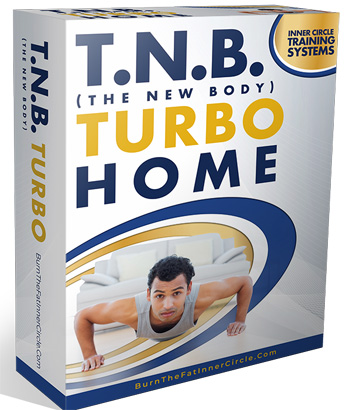

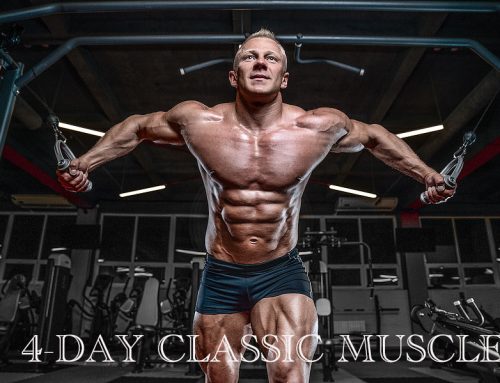
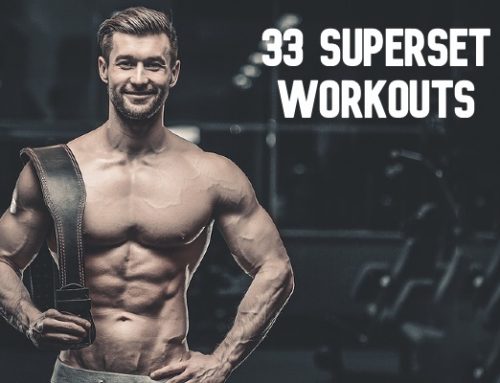
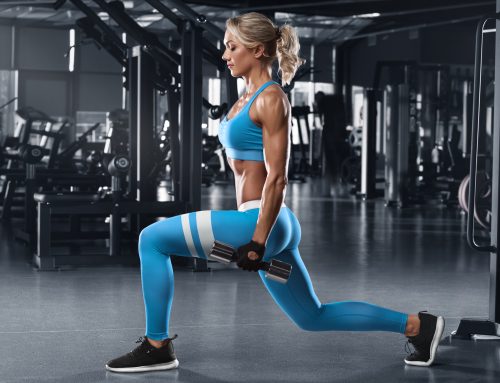
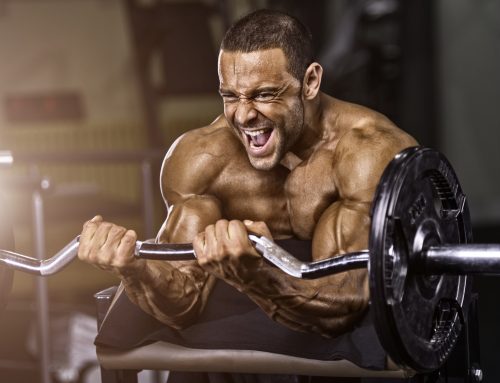
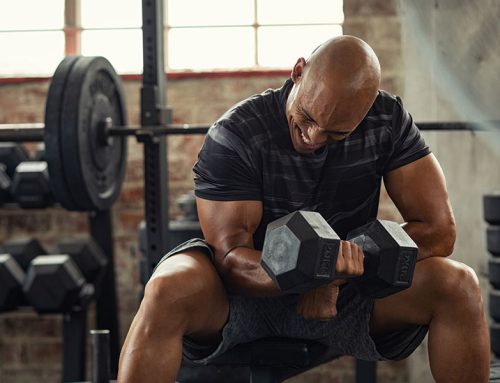
Where are some good places to buy this equipment?
Im not endorsing any particular brands, but in our member forums, our members listed their favorite models and companies and they included: rogue, sorinex, body solid, titan and a handful of others. It may be more expensive but Rogue was mentioned the most. There are very inexpensive available including some that are made especially for home use (as opposed to commercial gym use) you can search online or for retailers locally, and you can probably find decent equipment and local sporting goods stores. I know some people who have purchased from amazon. Be sure to do a little research first
I have a small home gym (converted bedroom), and I find some other items to be quite handy: med ball/slam ball, bands of various resistance — including full circle (loop) bands for shoulder and glute/leg conditioning work, and kettlebells for metabolic exercises that work well with them. I have a 20 kg core bag that serves as my ‘barbell’ sometimes or for functional training ’cause I can’t fit a barbell in the room.
Sounds great, but problematic if you live in a small apartment. What do you think about resistance bands? Are those any good?
resistance bands combined with body weight resistance is good. Add dumbbells and its even better. I have a tiny corner of a garage right now. I still got a full rack of dumbbells and a bench. A set of adjustable dumbbells are great (Bowflex or powerblock) if you can find them in stock these days. If I had access to weights I would not use resistance bands alone, but they are a great tool to have as one part of a larger toolkit. definitely economical, convenient and space saving
Very impressed with your overview on this topic! Thanks for your advice!